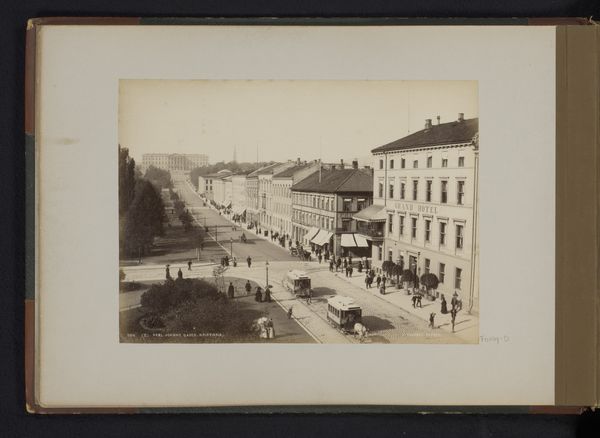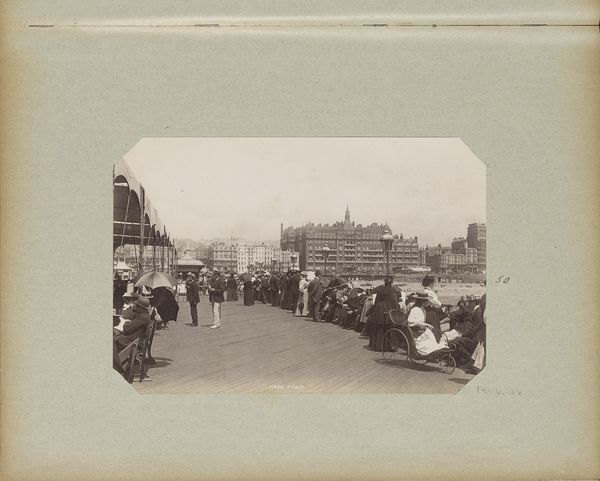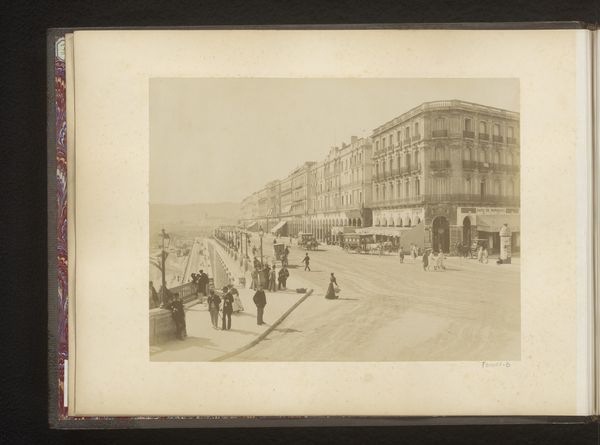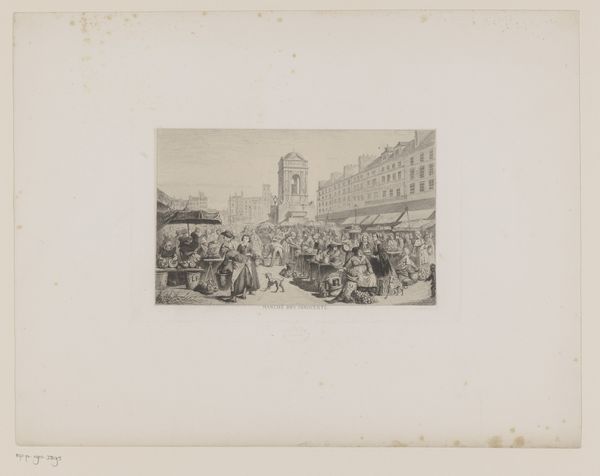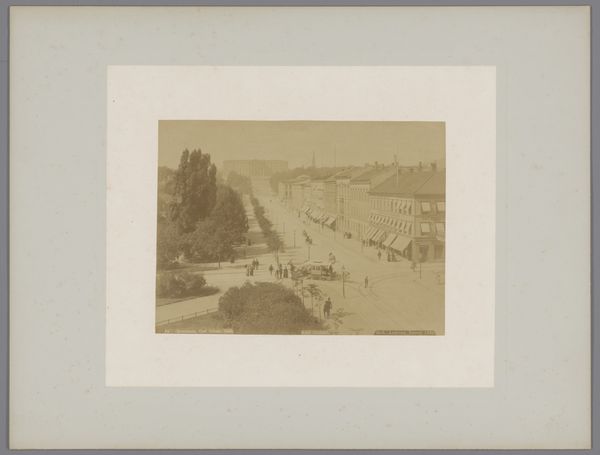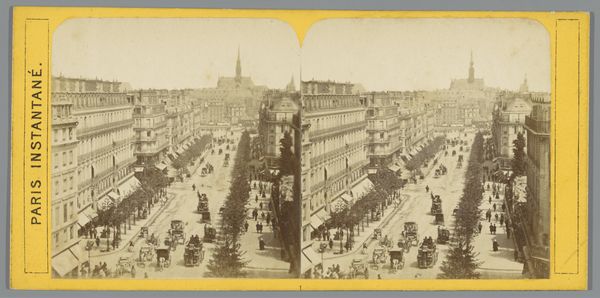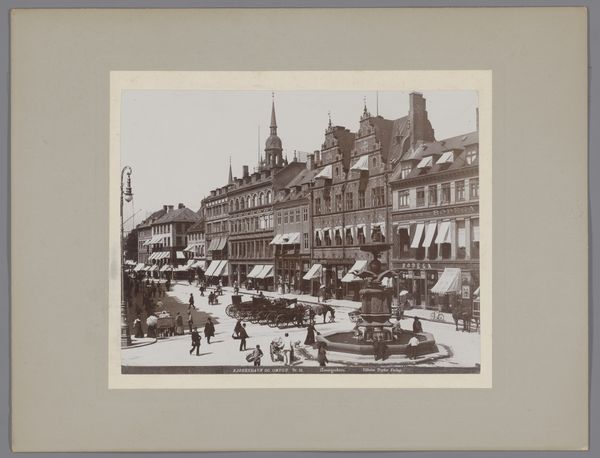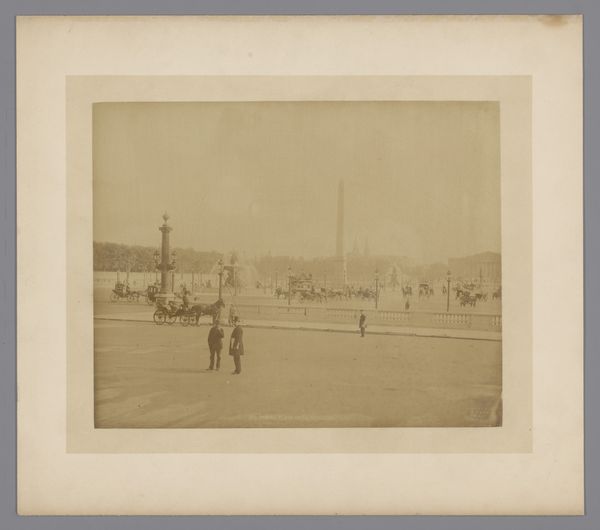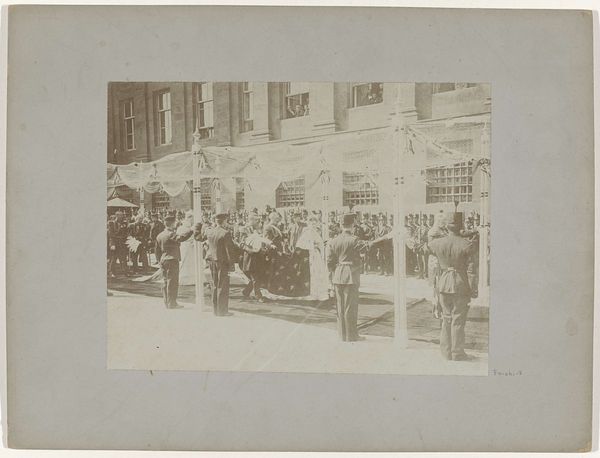
Straatgezicht in Santa Lucia met een markt te Napels, Italië 1852 - 1890
0:00
0:00
#
photo of handprinted image
#
pale palette
#
pale colours
#
ink paper printed
#
light coloured
#
white palette
#
watercolour illustration
#
tonal art
#
soft colour palette
#
watercolor
Dimensions: height 309 mm, width 399 mm
Copyright: Rijks Museum: Open Domain
Curator: What strikes me immediately is the tonal range – a kind of sepia dreaminess washes over the whole scene. It's almost painterly, not what one typically expects from a photograph. Editor: Indeed. This hand-printed image, "Straatgezicht in Santa Lucia met een markt te Napels, Italië," or "Street View in Santa Lucia with a Market in Naples, Italy," captured sometime between 1852 and 1890 by Fratelli Alinari, invites us to consider its place within the visual culture of the period. Curator: Precisely. Notice how the composition leads the eye. The linear perspective of the street, reinforced by the tram tracks, pushes our gaze towards the background, yet the density of figures and carts holds us in the immediate foreground. Editor: And this bustling marketplace, I suspect, represented more than just a commercial exchange. Public spaces like these served as vital arenas for social interaction, political discourse, and the negotiation of power relations within Neapolitan society. Curator: It’s interesting how the limited palette, a result of the printing process, actually unifies the diverse elements within the scene. It softens the contrasts, lending a sense of harmony, of a city functioning, albeit in a rather crowded fashion. Editor: I’d add that the choice to depict a market scene reveals something about the intended audience for this image. The Alinari brothers were renowned for their commercial enterprise, selling images of Italian life and monuments to tourists, academics, and collectors across Europe. This picturesque image no doubt reinforced certain expectations of what constituted ‘authentic’ Italian experience. Curator: Absolutely, but it also goes beyond pure representation. The subtle gradations of tone create an almost tactile quality. You can almost feel the warmth of the sun on the buildings, the dust of the street. There is also a careful balance between detail and suggestion. The faces are somewhat indistinct, contributing to the overall atmospheric effect. Editor: So, we have here both a document and a constructed image; simultaneously reflecting and shaping perceptions of Naples in the 19th century. I wonder if the depicted commercial activities were flourishing in reality, or enhanced for sales purposes. Curator: I’m left considering how even in its limited palette, it communicates a certain energy and atmosphere that perhaps a full-color rendering could not achieve. Editor: Agreed. A deeper understanding of historical context allows us to more deeply consider the interplay between artistic choices and the realities of representing 19th-century Naples.
Comments
No comments
Be the first to comment and join the conversation on the ultimate creative platform.
